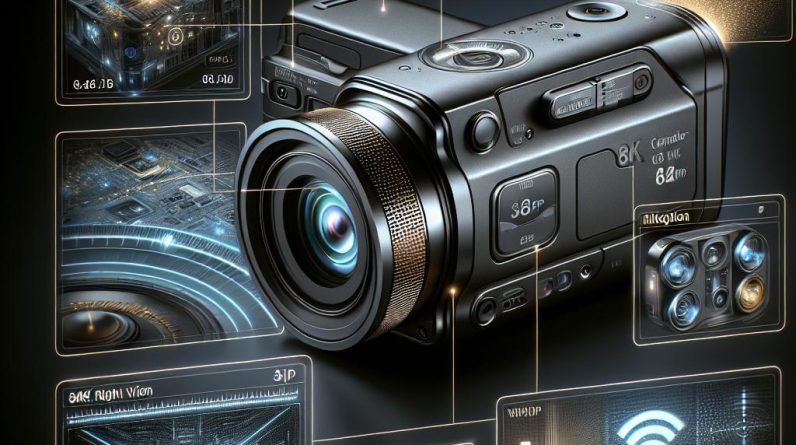Join us on a journey back to 1895, where German physicist Wilhelm Roentgen made an astonishing discovery that changed medicine forever! Discover how his experiments with cathode rays led to the creation of the world’s first X-ray image—his wife’s hand adorned with her wedding ring. From its humble beginnings to today’s advanced imaging technologies, explore the evolution of X-rays and their impact on healthcare. Don’t miss this fascinating look at science that transformed our ability to diagnose and treat!
#XRay #WilhelmRoentgen #ScienceHistory #MedicalTechnology #Innovation #NobelPrize
The man who saw Inside: Wilhelm Roentgen and the Discovery of X-Rays 📷✨
Wilhelm Roentgen: A Brief biography
Wilhelm conrad Roentgen was born on march 27, 1845, in Lennep, Germany. He was a brilliant physicist who made meaningful contributions to scientific knowledge, but he is best known for his discovery of X-rays in 1895. Roentgen’s early academic career included studying at multiple institutions, leading to various teaching positions in physics. His exceptional work laid the foundation for modern medical imaging.
Key Milestones in Roentgen’s Life
- 1845: Born in Lennep, Germany.
- 1865: Graduated from the Polytechnic Institute in Zürich.
- 1874: Became a professor at the University of Würzburg.
- 1895: Discovered X-rays.
- 1901: Awarded the first nobel Prize in Physics.
The Discovery of X-Rays
On November 8, 1895, Wilhelm Roentgen experimented with cathode rays, which led to his accidental yet revolutionary discovery of a new type of radiation. This radiation was able to penetrate various materials, including human tissue, leading to the creation‍ of the first X-ray images.
How Were X-Rays Discovered?
During his experiments,Roentgen noticed a green glow emitted by a nearby barium platinocyanide screen when the cathode ray tube was energized. This led him to explore further. His meticulous research and tests revealed that the rays produced could travel through solid objects, including human bones, thus producing shadowy images on photographic plates.
The First X-Ray Image
The first X-ray image Roentgen produced was of his wife,Anna bertha Ludwig’s hand,which showed her wedding ring visibly. This remarkable breakthrough not only amazed the scientific community but also paved the way for a new field in medical diagnostics.
The Science Behind X-Rays
X-rays are a form of electromagnetic radiation, similar to visible light but with much higher energy. This energy allows them to penetrate matter, making them useful for a variety of applications, particularly in medicine.
How Do X-Rays Work?
| Process | Description |
|---|---|
| Production | X-rays are created when high-energy electrons collide with a metal target within an X-ray tube. |
| Transmission | X-rays pass through the body and are absorbed by different tissues to varying degrees. |
| detection | A photographic plate or digital sensor captures the differing shadows produced by the absorbed X-rays. |
Benefits of X-Rays in Medicine
Since their discovery, X-rays have transformed medical diagnostics and treatment.Here are some significant benefits:
- Non-invasive Diagnosis: X-rays allow for the internal visualization of the body without surgery.
- Rapid Imaging: X-ray imaging can be performed quickly, frequently enough in minutes.
- Bone fracture Detection: X-rays are essential for identifying fractures and dislocations.
- Monitoring treatment: Doctors use X-rays to monitor the effectiveness of treatments for various conditions.
- Early Disease Detection: X-rays can definitely help in the early detection of diseases like pneumonia and certain cancers.
Case Studies: The Impact of X-Rays
Over the years, X-rays have aided numerous medical advances. Here are a few case studies illustrating this impact:
1. Detecting lung Cancer
X-ray imaging is crucial in detecting lung abnormalities,including tumors. Early diagnosis through chest X-rays considerably increases survival rates.
2. Diagnosing Bone disorders
X-rays are the primary method for diagnosing conditions like osteoporosis and arthritis. These imaging techniques provide physicians with essential data for effective treatment plans.
3. Guiding Surgical Procedures
X-ray imaging is vital in procedural guidance, such as during orthopedic surgeries, ensuring precise alignment and placement of implants.
First-Hand Experience: The Role of X-Rays in Modern Medicine
Medical professionals today rely on X-ray technology as a trusted diagnostic tool in everyday practice. A radiologist might share their experience, saying, “Each day, I encounter various cases where X-rays have been the key to understanding the patient’s condition. It still amazes me how roentgen’s discovery changed medicine forever.”
Challenges and Safety Concerns with X-Rays
While X-rays have tremendous benefits, some challenges and safety concerns exist.Overexposure can lead to harmful effects, such as an increased risk of cancer. Therefore, it is crucial to:
- Limit unnecessary X-rays and ensure they are medically justified.
- Use protective equipment, such as lead aprons, during imaging procedures.
- educate patients about the risks and benefits of X-ray imaging.
Future of X-Ray Technology
The future of X-ray technology ‍is exciting, with advancements such as:
- Digital X-rays: These provide enhanced image quality and immediate results.
- 3D Imaging: Innovations in imaging are enabling three-dimensional reconstructions for better diagnostics.
- Artificial Intelligence: Integrating AI can assist radiologists in detecting anomalies, improving accuracy, and reducing diagnostic errors.
Wilhelm Roentgen’s legacy lives on through the X-ray technology that has revolutionized medicine. Each day, countless patients around the world benefit from the profound discoveries made by this remarkable man.






